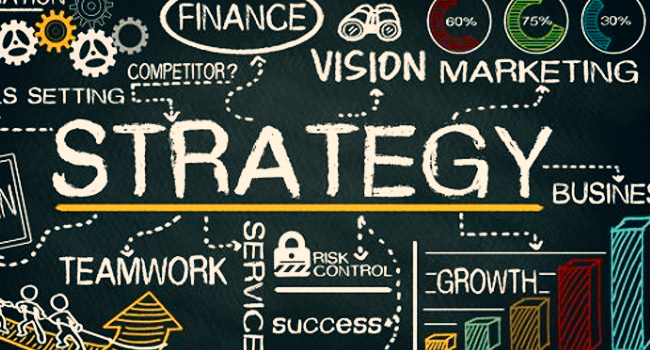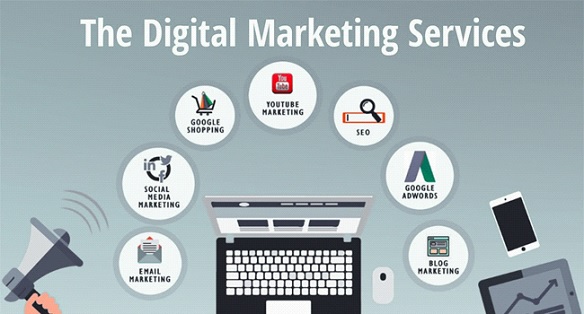In the ever-evolving world of online marketing, achieving long-term success requires a strategic approach that adapts to changing trends, technologies, and consumer behaviors. While short-term gains are significant, a sustainable digital marketing strategy builds a strong foundation that fosters brand growth, customer loyalty, and consistent Engagement. To thrive in the digital landscape, businesses must employ various strategies that align with their goals and evolve with the dynamic nature of online marketing.
1. Content is King: Creating Valuable Content
Content lies at the heart of any successful online marketing strategy. By consistently creating high-quality, relevant, and valuable content, businesses can establish themselves as authoritative sources in their industry. Blogs, articles, videos, infographics, and podcasts all contribute to building a loyal audience. Content should educate, entertain, address your audience’s pain points, and provide solutions.
2. Search Engine Optimization (SEO): Ranking for Relevance
A robust SEO strategy is a cornerstone of long-term online success.
3. Email Marketing: Nurturing Relationships
Providing valuable content, personalized recommendations, and exclusive offers through email campaigns keeps your brand top of mind. Segmentation and automation allow for tailored messaging that resonates with different customer segments.
4. Social Media Engagement: Building Communities
Regularly posting relevant content, responding to comments, and fostering meaningful interactions humanize your brand and cultivate a loyal following. Utilize analytics to identify which platforms resonate most with your target audience.
5. Influencer Partnerships: Leveraging Authority
Influencers’ authentic endorsements introduce your products or services to their followers, fostering trust and driving long-term growth.
6. Customer Experience Focus: Providing Value
A seamless customer experience across all touchpoints, from browsing to purchase and post-sales Support, is crucial. Ensuring ease of use, quick response times and personalized interactions fosters customer loyalty and advocacy.
7. Data-Driven Decision Making: Analytics for Improvement
Data is a goldmine for making informed decisions. Regularly assessing metrics helps you fine-tune your strategies and optimize outcomes.
8. Conversion Rate Optimization (CRO): Enhancing User Experience
Optimizing your website’s user experience and design can significantly improve conversion rates. A user-friendly interface, clear calls to action, and A/B testing can increase conversions and revenue over time.
9. Video Marketing: Captivating Visual Storytelling
Video content continues to gain popularity, making it a valuable component of a long-term strategy. From educational videos to product demonstrations and behind-the-scenes glimpses, videos engage users and foster emotional connections.
10. Mobile Optimization: Meeting User Expectations
Mobile optimization is no longer an option—it’s a necessity.
11. Voice Search Optimization: Adapting to New Trends
The rise of voice-activated devices requires a shift in SEO strategy. Optimize your voice search query content using natural language, question-based phrases, and local search optimization.
12. Social Responsibility and Transparency: Building Trust
Consumers value brands that are socially responsible and transparent. Showcase your brand’s values, philanthropic efforts, and ethical practices to connect with conscious consumers on a deeper level.
13. Building Online Communities: Fostering Engagement
Beyond social media, create online communities that revolve around your brand, industry, or interests. Forums, discussion boards, and online events encourage active Engagement and strengthen customer relationships.
14. Chatbots and AI Integration: Enhancing Support
Integrating AI-powered chatbots into your website can improve customer support and user experience. Chatbots provide instant assistance, answer frequently asked questions, and gather valuable data for future optimization.
15. Personalization at Scale: Tailoring Experiences
Deliver personalized experiences by utilizing customer data to recommend products, content, and offers that align with individual preferences and behaviors.
16. Long-Form and Evergreen Content: Timeless Appeal
Investing in long-form and evergreen content ensures that your material remains relevant and valuable for an extended period. Guides, tutorials, and comprehensive articles continue to attract traffic and provide value over time.
17. Affiliate Marketing: Expanding Reach
Collaborating with affiliates or partners can expand your Reach to new audiences. Offer affiliates incentives to promote your products or services and leverage their networks for long-term growth.
18. Webinars and Online Events: Sharing Expertise
Hosting webinars, workshops, and online events positions your brand as an expert. You build credibility and attract a dedicated audience by sharing valuable insights and knowledge.
19. Retargeting and Remarketing: Reengaging Audiences
Retargeting campaigns remind users who have previously visited the website of your products or services. This strategy reengages potential customers and encourages them to revisit and convert.
20. Customer Reviews and Testimonials: Trust Signals
Encourage customers to leave reviews and prominently display them on your website.
21. Local SEO and Google My Business: Targeting Locally
Local SEO and Google My Business optimization are essential for businesses with physical locations. This ensures your brand appears in local search results, driving foot traffic and conversions.
22. Long-Term Relationships with Influencers: Strategic Partnerships
Instead of one-off influencer collaborations, build long-term relationships with influencers. This deepens their connection with your brand and allows ongoing collaboration and promotion.
23. AI-Powered Personalization: Adaptive Marketing
Utilize artificial intelligence to analyze user behavior and preferences, enabling you to deliver highly personalized content, offers, and recommendations.
24. Sustainable Messaging: Authenticity Matters
Consistency in messaging, brand voice, and values is crucial for long-term success. Authenticity resonates with audiences and builds a lasting emotional connection.
25. Educational Resources: Empowering Users
Providing educational resources such as guides, tutorials, and how-to articles establishes your brand as a valuable source of knowledge and fosters user loyalty.
26. Social Listening: Insights from Conversations
This provides insights into customer sentiment and trends.
27. Lifecycle Marketing: Nurturing at Every Stage
Develop campaigns that cater to users at different stages of the customer journey, from awareness and consideration to conversion and advocacy.
28. Agile Strategy: Adapting to Change
The digital landscape evolves rapidly. An agile marketing strategy allows you to adapt to new trends, technologies, and consumer behaviors while staying true to your brand identity.
29. Focus on Core Competencies: Specialization
Instead of spreading resources thin across various platforms and tactics, focus on your core competencies. Invest in strategies that align with your strengths and resonate with your target audience.
30. Customer-Centric Approach: Prioritizing User Needs
Place the needs and preferences of your customers at the center of your strategies. Listen to feedback, address pain points, and continually optimize the customer experience.
31. Competitive Analysis: Staying Ahead
Regularly analyze your competitors to identify opportunities and gaps in the market. Learn from their successes and failures to fine-tune your strategies.
32. Long-Term Keyword Strategy: Sustainable Visibility
Develop a keyword strategy that focuses on both short-tail and long-tail keywords. Long-tail keywords often have less competition and can drive targeted traffic over time.
33. Evergreen Social Media Content: Timeless Appeal
Create evergreen social media content that remains relevant and valuable regardless of trends. Tips, educational content, and inspirational quotes continue to engage your audience.
34. Mobile-First Design: User-Centric Experience
Design your website and content with a mobile-first approach. This ensures a seamless and user-friendly experience for the growing number of mobile users.
35. Thought Leadership: Becoming an Authority
Position yourself and your brand as thought leaders in your industry. Publish insightful articles, participate in industry discussions, and share valuable insights to gain credibility.
36. User-Generated Content: Fostering Community
User-generated content fosters a sense of Community, authenticity, and Engagement.
37. Focus on Quality over Quantity: Strategic Posting
Rather than bombarding your audience with content, focus on delivering high-quality, valuable posts that resonate with them.
38. Social Media Advertising: Targeted Promotion
Utilize social media advertising to reach your target audience with precision.
39. Email Segmentation: Personalized Communication
This allows you to send targeted and relevant messages that resonate with different groups.
40. Data Privacy and Security: Building Trust
Respect user data privacy and security.
41. Continuous Learning: Adapting to Trends
Continuous learning allows you to adapt your strategies to changing circumstances.
42. Multichannel Approach: Diversifying Reach
Don’t rely solely on one marketing channel. A multichannel approach ensures you reach a broader audience and remain visible across various platforms.
43. Retaining Existing Customers: Cultivating Loyalty
While acquiring new customers is essential, nurturing and retaining existing ones is equally valuable. Loyal customers provide repeat business and become brand advocates.
44. Crisis Management: Preparedness Matters
Have a crisis management plan in place to handle adverse situations or controversies. Swift and thoughtful responses demonstrate your commitment to customer satisfaction.
45. Collaboration and Partnerships: Amplifying Reach
Collaborate with complementary brands or businesses to extend your Reach. Joint promotions, co-branded content, and partnerships can attract new audiences.
46. Long-Term ROI Focus: Measuring Value
Rather than solely focusing on short-term metrics, track long-term return on investment (ROI) to understand the lasting impact of your marketing efforts.
47. Continuous Optimization: Iterative Approach
Aim for continuous improvement by testing and optimizing various aspects of your strategy, including content, messaging, design, and user experience.
48. Internal Alignment: Collaborative Efforts
Collaboration ensures a consistent and unified brand message.
50. Flexibility and Adaptability: Embracing Change
The digital landscape is dynamic. Be prepared to adapt and adjust your strategies as new technologies, trends, and consumer behaviors emerge.
In conclusion, achieving long-term success in online marketing requires strategic planning, flexibility, and a customer-centric approach. By building strong relationships, providing Value, and continuously optimizing your strategies, you can confidently navigate the digital landscape and establish your brand as a trusted authority. While short-term wins are essential, consistent and sustainable efforts pave the way for lasting success in the competitive world of online marketing.




